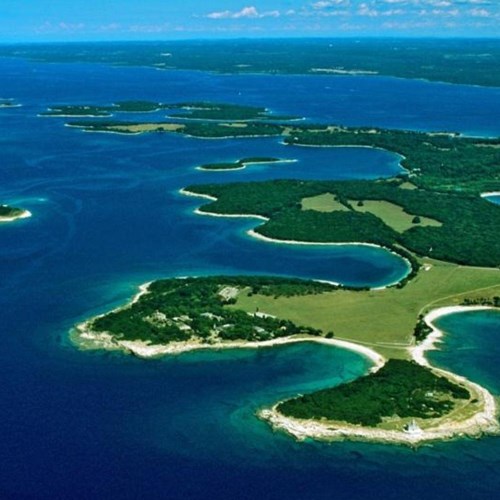
Pula, Croatia
Jewel of the verdant peninsula of Istria, Pula is the province’s largest city and forms a dramatic gateway to the seductive, crystalline waters of the Adriatic. Situated at the southernmost tip of the area, which has come to be known as ’the new Tuscany’ for its bright medieval hilltop towns and ancient ruins, Pula boasts a rich and varied cultural heritage. The city is bordered by national parks remarkable for their astounding unspoilt natural beauty and is celebrated for its wonderfully preserved Roman amphitheatre and forum, which form a dramatic backdrop for leisurely strolls from the old town to the coast.
Population:
62,000
Currency:
1 kuna = 100 lipa
Emergency Numbers:
For all emergency situations: 112
Police: 192
Fire brigade: 193
Ambulance: 194
Opening Hours:
The majority of shops are open Monday to Friday from 8 am-8 pm and Saturday 8 am-1 pm. You will also find that many food shops, supermarkets and outdoor markets are open daily 7 am-7 pm. Museum and gallery opening times vary from one place to another.
Newspapers:
Glas Istre
The City

The ancient town of Pula has been inhabited since 1000 BC. Roman expansion into the peninsula in the first century AD has left the city with many of its most glorious monuments, including the world-renown amphitheatre which hosts the city’s annual opera festival every summer. After the fall of Rome, Pula passed through the hands of various warring groups including the Ostrogoths and the Francs before becoming part of the Venetian republic in the 12th century, leaving the port city with an eclectic mix of cultural influences which can be seen in the architecture of the city today.
Pula has a certain literary fame as well, mentioned in Dante’s 14th century classic, "The Divine Comedy," and as the home of Irish author, James Joyce, who taught at the Berlitz School in 1905. 21st-century Pula nestles snugly at the cusp of seven hills that open out into a wide natural harbour, which has been the bustling commercial hub of the city since the mid-19th century.
The centre of the city can easily be explored on foot and many of Pula’s most exciting museums, restaurants and parks are within 10 minutes’ walk of each other. If you have time, venture beyond the city and into the surrounding area where Roman ruins lie buried in the fertile farmland and numerous tiny picturesque villages cling to the glittering coastline. It is a great area to walk in and the exquisite beauty of the nearby national parks is not to be missed.
Do & See

Pula offers a mixture of attractions for those interested in culture and history. Here you can see beautiful attractions like the Roman Amphitheatre, Ancient Cathedral, Old Town and the Temple of Augustus. Pula also offers fun family entertainment like the Aquarium with open tank with all kind of sea life. A great tourist asset is Pula’s 190 kilometre of coastline with crystal clear sea and beaches that suit everyone´s needs. If you would like to go for a short trip then Brijuni National Park is a great choose, located in an island close to Pula.
Dining

As a result of its proximity to Italy and its wealth of glorious coastline, Istria has a varied, fresh and sophisticated cuisine which draws on influences from across the Mediterranean and the Adriatic coasts.
As the largest town in the region, Pula has a wide range of restaurants serving a refreshing selection of fresh products. The fertile soil of the region gives a distinctive flavour to the olives and grapes which grow near to the sea and the vineyards which give the area its name for great wine and some of the finest olive oil in the country.
Istrian cooking takes advantage of many Italian techniques so expect to find an interesting mix of Mediterranean. Along the coast, restaurants serve brancin (sea bass), list (sole), dagnje (mussels), vongole (clams) and kozice-racici (prawns). According to local lore, the seafood tastes better here than elsewhere in the Adriatic and Mediterranean because the waters around Istria are so rich in nutrients.
Cafes

Relax in one of the places and enjoy coffee or tea after a full day of historical sightseeing. You will find many coffee shops on the street Forum, where the Temple of Augustus stands, a square described as a bustling piazza with many nice venues.

